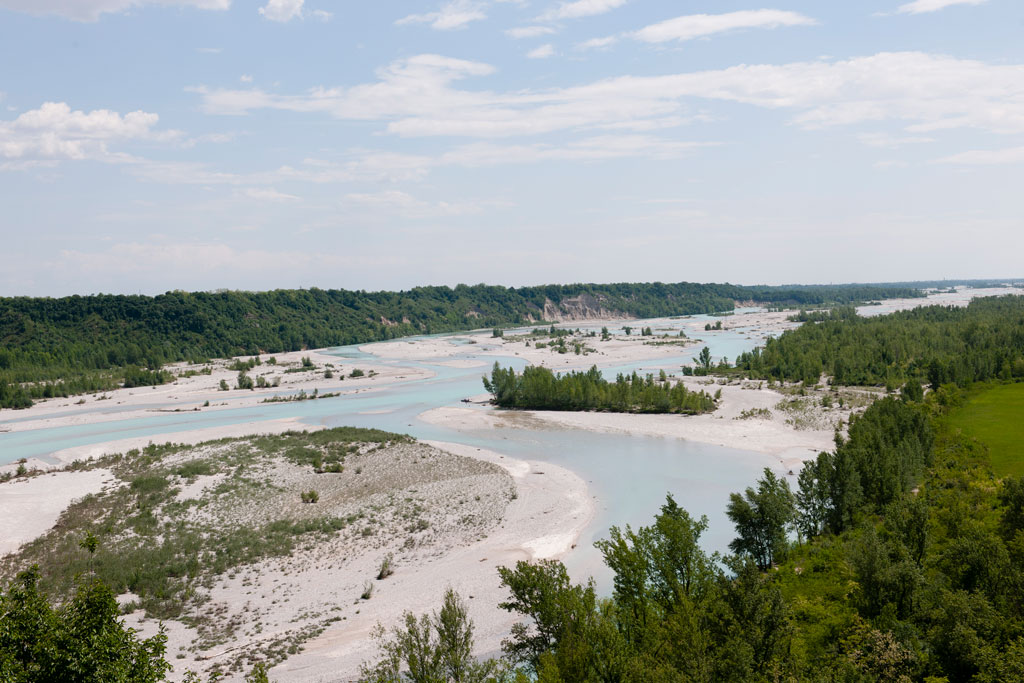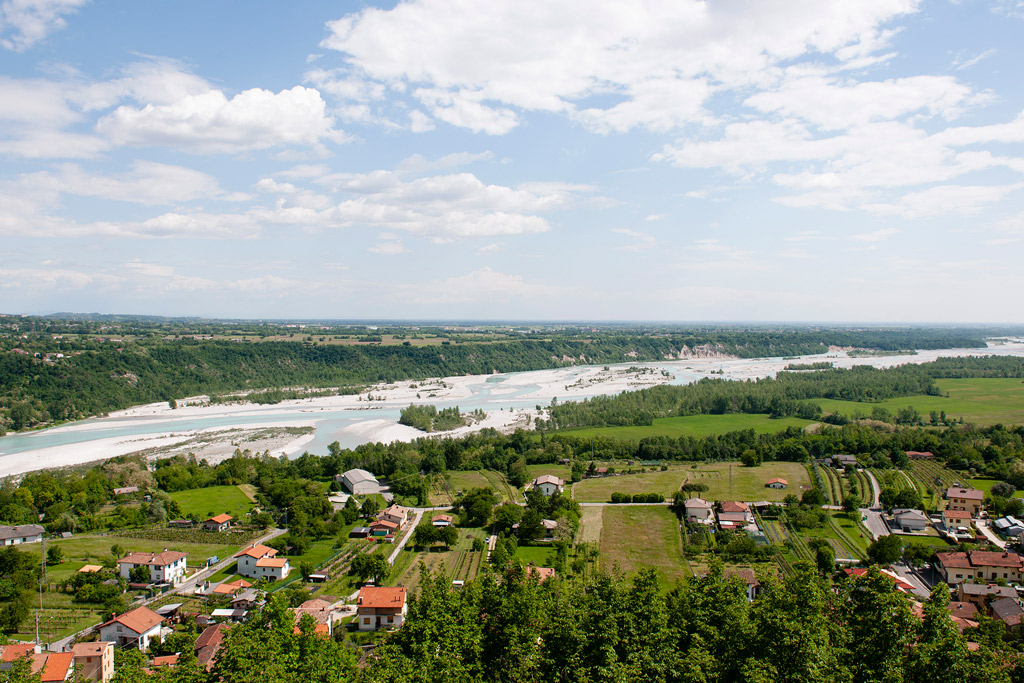



The Tagliamento is the most important river in Friuli-Venezia Giulia with a length of 170 km and a river basin almost 3,000 km² wide.
Considered the only one in the entire Alpine arc and one of the few in Europe to preserve the original morphology with intertwined channels, it is also called King of Alpine rivers.
The Tagliamento was born near the Mauria Pass in the town of Lorenzago di Cadore, in the province of Belluno (Veneto). In the very first stretch it flows through the historic region of Cadore, and then crosses all of Carnia from west to east. In the middle-lower section it forms the border between the former provinces of Pordenone and Udine and later between Friuli Venezia Giulia and Veneto (metropolitan city of Venice), and finally flows into the Gulf of Venice between Lignano Sabbiadoro (UD) and Bibione (VE).
Its drainage basin extends over 2,916.86 km² and gathers a population of approximately 165,000 people. This basin is found almost entirely in Carnia and in the other Friulian mountain valleys. The main inhabited centers located on its banks are Latisana and San Michele al Tagliamento, while in the immediate vicinity of the river are Tolmezzo, Enemonzo, Gemona del Friuli, Trasaghis, San Daniele del Friuli, Spilimbergo, Valvasone, Sedegliano, Codroipo, San Vito al Tagliamento.
The river has torrential characteristics, a bed up to two kilometers wide (compared to a length of 170), the absence of artificial embankments and a limited number of bridges due to the prohibition to build on an area of military interest, considered a line of military defense up to the Cold War. The permanence of the original river bed and corridor, and the absence of significant human contributions along its course, make it “the last wild river in Europe” [5]. Only here can a river bed with intertwined channels and of a similar width still be observed. Its contribution to the ecosystem of the Adriatic Sea derives primarily from the quality of the flowing waters, and from the white dolomite sediments of the Carnic Alps and volcanic rock, which determine tourist realities such as Lignano and Bibione.
[source Wikipedia]